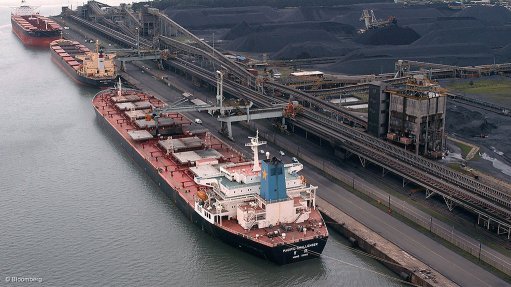
Photo by: Bloomberg
TORONTO (miningweekly.com) – The Council of the Great Lakes this week released a report titled 'Low Water Blues', conducted by the Mowat Centre for Public Policy at the University of Toronto, on the economic impact of declining water levels in the Great Lakes and St Lawrence river, which demonstrated, with some clarity, the massive likely negative economic impact should levels continue to decline.
The report, released on Thursday, said water levels in the Great Lakes and St Lawrence basin “fell dramatically” in 1997/98 and even more in 2012/13 and had not recovered. Lower water levels could cost the economy of the Great Lakes region up to $19.3-billion by 2050.
For example, water levels in Lakes Superior and Michigan-Huron were substantially below historic averages. In January last year, Lake Michigan/Huron reached its lowest levels since the US and Canada began coordinated measuring and tracking of water levels in 1918.
The basin’s ecosystem was obviously important to the entire continent, but the economic footprint of the region was also immense, with economic output of $4.9-trillion, currently accounting for 28% of combined Canadian and US economic activity.
The Canadian Shipowners Association (CSA) on Thursday said the overall impact could cost the local shipping industry, which serves many industries such as manufacturing, agriculture, construction, power generation and mining, up to $2-billion.
Miners such as Cliffs Natural Resources depend on the inland waterways to move commodities such as iron-ore to customers.
“We are greatly concerned with what this ecological problem could do to our industry, which is such an important part of North American trade. It is clearly time for stakeholders to be engaged in understanding the consequences of doing nothing to protect this unique ecosystem and, instead, actively promote sustainable and safe transportation in this integrated system,” the association’s president Robert Lewis-Manning said.
The CSA, which was represented on the study's advisory committee, said it supported efforts to examine long-term mitigation efforts.
Fully loaded ships make marine transportation the most efficient and cost-effective mode of transportation for several commodities. In 2013, Canadian-flagged vessels conducting short-sea-shipping moved more than 60-million tonnes of cargo for import and export in Canada and the US.
The CSA membership operate Canadian-flagged and uniquely designed ships on Canadian coastal, Arctic and inland waters with greatly skilled Canadian crews and is part of a $35-billion continental marine transportation system.
Recent investments of more than $700-million in 14 new vessels, have positioned the industry for growth. Marine transportation is the most sustainable form of transportation.